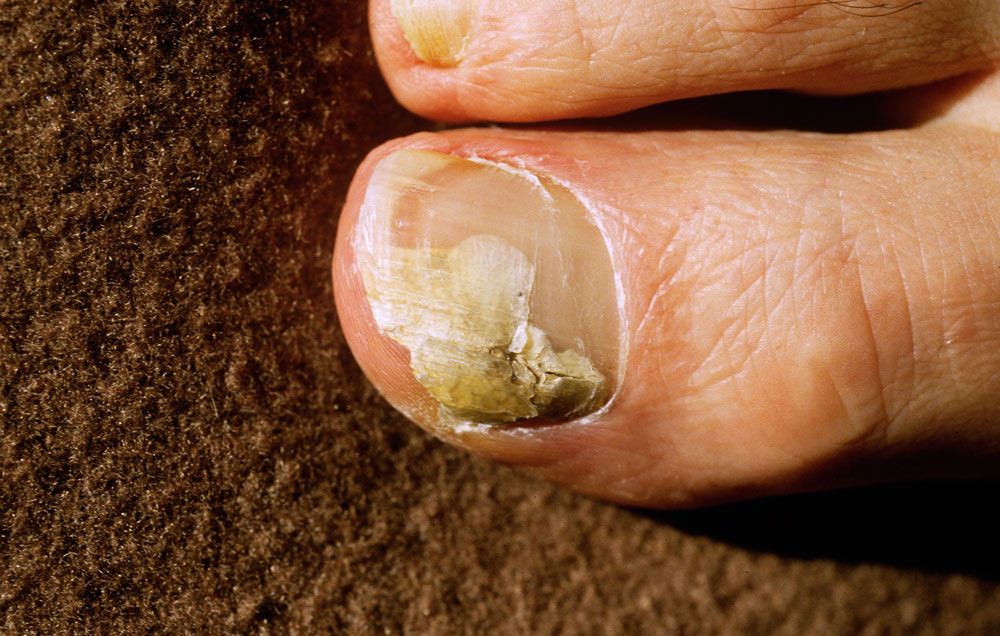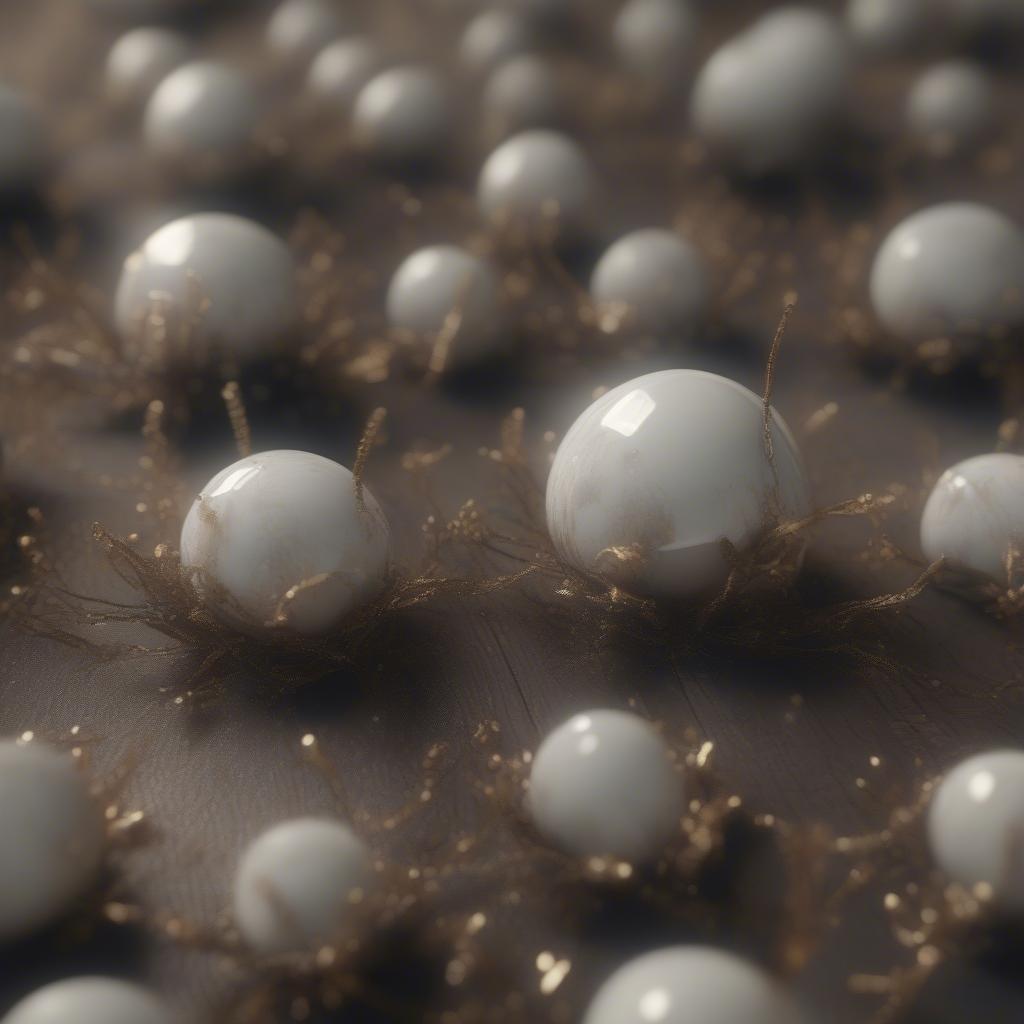Defeat nail fungus infection with these effective solutions! Discover treatments and prevention tips to keep your nails healthy.

Understanding Nail Fungus
Overview of Nail Fungus
Toenail fungus? Fun topic, right? No, seriously, it’s a party crasher for your nails—like athlete’s foot throwing a rave at your toenail’s expense. This pesky problem, technically called onychomycosis, makes your nails go from nice to gnarly. Think discolored and thick nails that chip away like old paint. Where do these fungi feel at home? Anywhere that’s warm, dark, and a bit too cozy for comfort. Your toenails are their vacation spot!
Common Causes of Toenail Fungus
What’s the reason behind these nail invaders? It’s mostly organisms called dermatophytes, but yeast, bacteria, and molds love to join the chaos too. Here are the culprits:
- Fungal Infections: Remember that athlete’s foot we mentioned? It’s got a sneaky sidekick routine crossing over to your nails with ease. And it doesn’t stop there! It might start on your foot and get a little too friendly with your nails too (Mayo Clinic).
- Environmental Exposure: Sharing a shower at the gym or letting your feet marinate in tight, sweaty shoes? That’s fungi’s VIP pass. They thrive where it’s warm, dark, and moist like an all-you-can-eat buffet for them (NHS Inform).
- Poor Nail Hygiene: Let’s be real, nail hygiene can easily be overlooked in the grand scheme of things. But neglect here can turn your nails into a fungus fun fair. Experts advise keeping an eye on moisture—you know, swap out shoes, sprinkle on that antifungal powder, and keep nail clippers pristine like you would a sharp knife. When hitting up the nail salon, make sure the tools aren’t sharing tales with previous clients (American Academy of Dermatology).
Knowing what invites these pesky fungi to the party means you can kick ’em out before they get comfortable. Keep nails clean, take preventive steps seriously, and your feet will thank you with less fungal fiasco.
Signs and Symptoms
Visual Indications of Nail Fungus
Nail fungus, or tinea unguium, likes to leave clues on your nails that can’t be ignored. It thrives in cozy, damp places, making those toenails prime real estate for an infection party. Here’s what to watch out for if you’re suspicious:
- Color Changes: Your nails might start channeling their inner chameleon, shifting to yellow or brown. At first, you might just notice an innocent-looking white or yellow-brown spot hanging out under the nail tip.
- Thickness: The nail can bulk up, turning into a miniature fortress that refuses to be trimmed.
- Ragged Edges: Say goodbye to smooth nails as they may become brittle and rugged.
- White Spots and Streaks: These can make an uninvited appearance on the nail’s surface.
- Separation from Nail Bed: In severe scenarios, the nail could decide to break up with the nail bed, a situation known as onycholysis.
| Symptom | Description |
|---|---|
| Color Changes | Yellow or brown hues |
| Thickness | Hardened nail that’s stubborn |
| Ragged Edges | Brittle, ragged appearance |
| White Spots/Streaks | Unwanted guests on nails |
| Nail Separation | Nail splitting from bed |
Physical Discomfort and Effects
Nail fungus might not hurt at first, but that doesn’t mean it won’t flex its discomfort muscles later on (Cleveland Clinic). As things get worse, you might notice:
- Soreness or Swelling: The area around the troubled nail can swell or ache thanks to your body’s protest (American Academy of Dermatology).
- Pain: A nagging pain might set up camp around the nail, especially if the thick nails start hugging your shoes a tad too tightly.
- Itchiness: Dry, itchy skin may develop, craving some serious scratching.
- Cracked or Crumbling Nails: These nails might go AWOL, cracking and crumbling, making walking or standing a bit of a challenge.
| Symptom | Description |
|---|---|
| Soreness/Swelling | Around the nail’s neighborhood |
| Pain | Tenderness, especially with pressure |
| Itchiness | Dry, itchy surprises |
| Cracked/Crumbling Nails | Walking discomfort |
Keep your eyes peeled for these signs, and don’t hesitate to tap a healthcare buddy for help. Spotting the symptoms early gives you a fighting chance to tackle nail fungus head-on.
Treatment Options
Got toenail fungus? Fear not, because there are a bunch of ways to tackle that pesky nuisance. We’re zoomin’ in on pills, creams, and some more dramatic methods if things get gnarly.
Oral Antifungal Medications
Pop a pill, combat the ick! Prescription pills like itraconazole and terbinafine are the go-tos for many. Typically, these meds take between 6 and 12 weeks to do their thing, but it might be a few months before the fungus waves a white flag (Mayo Clinic). The success rates? Not too shabby, hitting between 60% and 80% (NHS Inform).
| Medication | Success Rate | Duration | Side Effects |
|---|---|---|---|
| Itraconazole (Sporanox) | 60-80% | 6-12 weeks | Possible rash, liver issues, drug clashes |
| Terbinafine | 60-80% | 6-12 weeks | Notably lighter on details |
Heads up, though! If you’re over 65, these might not work as swiftly, and there’s that pesky chance of a rash or liver surprises. Plus, they might not play nice with your other meds.
Topical Antifungal Treatments
Now, if slathering some cream sounds more your speed, you’re in luck. Creams like efinaconazole (Jublia) and tavaborole (Kerydin) can be pretty handy. They’re best buddies with thinned nails and work great post soaking (Mayo Clinic).
| Treatment | Application Method | Side Effects |
|---|---|---|
| Efinaconazole (Jublia) | Apply to freshly soaked nails | Watch out for a rash |
| Tavaborole (Kerydin) | For well-prepared, soaked nails | Rash again might be on the cards |
| Antifungal nail paint | Over the counter, as simple as it sounds | Milder effects than the pill route |
Even though these creams might not be as mighty as pills, they’re easier on your system. And, antifungal nail paint? Easily snagged at your local drugstore. Handy dandy and often backed by your doc or pharmacist (NHS Inform).
Surgical Interventions
When things get outta hand, sometimes ya gotta go in deeper. In severe scenarios, you might have to let the nail doc do their dance and take the nail out, temporarily, and slather it with meds directly. In hard-core cases, the nail might be shown the exit for good (Mayo Clinic).
| Surgery Type | Description | Application |
|---|---|---|
| Temporary nail removal | Lifted long enough to get those meds in | Only for the stubborn stuff |
| Permanent nail removal | Hasta la vista nail, no looking back | When other measures hit a wall |
Surgery might seem too much, but sometimes it’s the best bet to say goodbye to stubborn fungus when everything else waves off.
Special Considerations
Age and Treatment Response
Toenail fungus that pesky intruder also known as onychomycosis sneaks its way more often into the toes of older adults. Imagine this: It’s playing footsie with about one in every ten people, but when the calendar hits 70 candles, it doubles its dance cards to one in two folks. Dermatophytes, the main culprits behind toenail fungal infections, claim 90% of these cases.
Now, when it comes to tackling this with antifungal pills, there’s a bit of a snag for the over-65 crowd. It’s like the meds struggle to deliver the one-two punch they pack for the younger set. Oldies often start with oral antifungal drugs like itraconazole (fancy name, Sporanox). But beware, as these can bring along their annoying sidekicks, rashes, liver issues, and they like to mess with other prescriptions too. Just think of them as that group of friends who never come without drama.
| Age Group | Prevalence of Nail Fungus (%) | Treatment Success Rate (%) |
|---|---|---|
| < 70 years | 10 | More effective |
| ≥ 70 years | 50 | Less effective |
Natural Remedies and Supplements
If you’re not too keen on popping those pills or just want to give nature a shot, there are some folksy remedies and supplements in the arsenal. Sure, these may not pack the same punch as their prescription pals, but they can still be part of the game plan, especially for those hunting for more earthy pathways.
Enter Biotin, the trusty nail-strengthener. If your nails are doing their best impression of a potato chip (brittle and breaky), a bit of Biotin might just help toughen them up. Then there’s tea tree oil, strutting its antifungal cred around town. People dab it on the problem nails, hoping to eject the infection as if they’re casting a stubborn spell.
| Remedy | Potential Benefit | Notes |
|---|---|---|
| Biotin Supplement | Bolsters weak/brittle nails | Cheers for nail health, clap clap! |
| Tea Tree Oil | Kicks fungi to the curb | A go-to for nail fungus skirmishes |
Mixing and matching these herbal helpers with standard treatments might just boost your defense when waging war against toenail fungus.
Prevention Strategies
Keeping toenail fungus at bay ain’t rocket science, but it does take a little bit of effort in how you take care of your paws and the world around them. With the right moves, you can kick fungus to the curb and flaunt some stellar nails.
Maintaining Nail Hygiene
Good nail habits are your frontline defense against the pesky fungus. Here’s what you gotta do:
- Trim Those Nails: Give your nails a regular trim and keep ’em on the shorter side to stop dirt and germs from crashing the party.
- Clean Your Clippers: Give those nail clippers a clean spa day by disinfecting them before they get near your nails, squashing fungal hitchhikers as you go.
- Rotate Your Kicks: Mix things up by wearing different shoes each day. This gives them a chance to dry out and keeps the fungi at bay.
- Bust Out the Antifungal Powder: Dust your shoes with antifungal powder to keep them nice and dry, booting out any unwelcome guests.
- Nail Salon Savvy: When hitting up the salon, make sure their gear gets a good scrubbing between customers.
- Personal Belongings Only: Keep your towels, shoes, and clippers to yourself to avoid sharing “fun guy” experiences.
Table: Nail Hygiene Practices
| Practice | Description |
|---|---|
| Trim Those Nails | Regular trims keep dirt and germs away |
| Clean Your Clippers | Disinfect grooming tools to avoid spreading unwanted fungi |
| Rotate Your Kicks | Allow shoes to dry out by wearing a different pair daily |
| Bust Out the Antifungal Powder | Add powder to shoes to absorb moisture and deter fungi |
| Nail Salon Savvy | Check salon hygiene to ensure equipment’s disinfected |
| Personal Belongings Only | Avoid sharing personal hygiene items to reduce the risk of fungus |
(Source: American Academy of Dermatology)
Environmental Prevention Tips
Your environment can be a breeding ground for fungi if you’re not careful. Keep these tips in your toolkit:
- Flip Flop on Floors: Slip on some shower shoes or sandals when you’re navigating communal showers, pools, or locker rooms. They’re the frontline against floor-dwelling fungi.
- Give Shoes a Spa Day: Regularly scrub and spray your shoes with disinfectant to squash any fungal spores.
- Fresh Socks Every Day: Start each day with a fresh, clean pair of socks. Sweat? No sweat.
- Dry Feet Are Happy Feet: After a bath or a swim, get every nook and cranny, especially between your toes, nice and dry.
- Soft and Supple: Use moisturizers to keep your skin from cracking, which can roll out the welcome mat for fungi.
Table: Environmental Prevention Tips
| Tip | Description |
|---|---|
| Flip Flop on Floors | Use sandals in places that are warm and humid |
| Give Shoes a Spa Day | Regular cleaning of shoes to eliminate spores |
| Fresh Socks Every Day | Keep sweaty feet in check with daily sock changes |
| Dry Feet Are Happy Feet | Ensure thorough drying of your feet, paying attention to spaces between toes |
| Soft and Supple | Use moisturizers to prevent cracks, denying fungi entry |
(Source: American Academy of Dermatology)
Taking these steps can keep your nails healthy and free from troublemaking fungi. Happy feet, happy life!
Additional Insights
Risks and Complications
Leaving nail fungus untreated? That’s like leaving milk out in the sun it’s just gonna get worse. The fungus loves to play havoc by making nails thick, crusty, and an artist’s palette of yellow and brown. Sometimes, the nail might even decide to take a vacation from the nail bed. According to the Mayo Clinic, that sneaky nail fungus starts as a tiny spot and can take over more than just your best nail-polished finger.
Now, if you think that’s bad, severe nail fungus can lead to serious pain, and become a nightmare of permanent damage. Plus, there’s the nasty possibility of it spreading especially if your immune system’s on vacation too, thanks to other health challenges like diabetes or certain meds. And who needs another health issue, right?
| Risk/Complication | Description |
|---|---|
| Thick, Crusty Nails | Trouble cutting, and they don’t look nice either. |
| Floating Nails | A.k.a., nails separating from the bed—ouch! |
| Forever Damaged Nails | Have fun explaining that at every salon visit. |
| Fungus Stampede | High chance of it going beyond your feet in tricky health situations. |
Recurrence and Long-Term Management
Even with treatments working their magic, these fungal invaders can come back like that one movie sequel nobody asked for. So, playing defense is your best offense. Keep an eye on those nails: look for old telltale signs like color changes, weird textures, soreness, and itchy feet drama (American Academy of Dermatology).
To thwart these party-crashers, dermatologists advise a regimen that seems pretty straightforward, but boy does it help:
- Flip-flops aren’t just trendy; they’re a must for public showers and pools.
- Daily foot scrubbing and drying ritual? Check.
- Keep the socks parade going, no rewind on gross sweaty ones.
- Guard your personal tools no nail clippers or shoe-sharing playdates.
Keep those nails in top shape:
- Alternating shoes gives moisture the boot.
- Antifungal powders love living in your shoes—it’s their spa.
- Short and sweet nails are happy nails.
- Clippers: scrub-a-dub with some sanitizer action.
- Demand disinfected tools at the nail salon your nails deserve VIP treatment.
Rolling these habits into your everyday life can seriously keep that fungus from crashing your nail party (American Academy of Dermatology).
| Prevention Strategy | Description |
|---|---|
| Shower Savvy | Ditch bare feet in showers and pools. |
| Kickin’ Foot Hygiene | Daily washing and thorough drying. |
| Dry Foot Zone | Frequent sock change-up. |
| Personal Item Protocol | Nail clippers are sacred, no sharing. |
| Nail TLC | Short nails, antifungal love. |
Knowing your fungus enemy is just step one. Keep a solid prevention plan in play, and you’ll score healthier nails that won’t ghost you for another round of issues.
FAQs
-
What Causes Toenail Fungus?
Fungal Infections: The primary culprits are dermatophytes, but yeast and molds can also cause infections. Conditions like athlete’s foot can easily spread to the toenails.
Environmental Exposure: Fungi thrive in warm, moist environments. Sharing showers or wearing tight shoes can increase the risk of infection.
Poor Nail Hygiene: Neglecting nail care can create an environment conducive to fungal growth. Regular cleaning and maintenance are essential. -
What Are the Symptoms of Toenail Fungus?
Color Changes: Nails may turn yellow or brown, often starting with small spots under the nail tip.
Thickness: Infected nails can become thick and hard, making them difficult to trim.
Ragged Edges: Nails may develop a brittle and rugged appearance.
Separation from Nail Bed: In severe cases, the nail may separate from the nail bed, a condition known as onycholysis. -
How Is Toenail Fungus Treated?
Oral Antifungal Medications: Prescription medications like itraconazole and terbinafine are commonly used. They typically require 6 to 12 weeks of treatment with success rates between 60% and 80%.
Topical Antifungal Treatments: Creams such as efinaconazole (Jublia) and tavaborole (Kerydin) can be effective for mild cases. They are applied directly to the affected nails.
Surgical Interventions: In severe cases, temporary or permanent removal of the nail may be necessary to allow for direct application of antifungal treatments.
Consider trying KeraBiotics today to support your nail health and complement your recovery plan. https://biofungusnuker.com/KeraBiotics -
What Are Some Natural Remedies?
Biotin Supplements: May help strengthen brittle nails.
Tea Tree Oil: Known for its antifungal properties, it can be applied topically to infected nails. -
How Can Toenail Fungus Be Prevented?
Maintain Nail Hygiene: Regularly trim nails and keep grooming tools clean to prevent fungal spread.
Wear Appropriate Footwear: Rotate shoes to allow them to dry out and use antifungal powder inside shoes.
Avoid Shared Spaces: Use sandals in communal showers or pools to protect against fungi.
Keep Feet Dry: Thoroughly dry feet after bathing or swimming, especially between the toes. -
What Are the Risks of Untreated Toenail Fungus?
Leaving toenail fungus untreated can lead to:
1) Thickened, discolored nails that may become painful.
2) Permanent damage to the nail structure.
3) Potential spread of infection to other areas of the body, particularly in individuals with weakened immune systems.
KeraBiotics
Incorporating KeraBiotics into your toenail recovery plan can significantly enhance your journey toward healthier nails. KeraBiotics is the advanced probiotic mix that supports healthy toenails, making it a valuable addition to your regimen. This product not only targets fungal infections but also nourishes and strengthens your nails from within. By integrating KeraBiotics, you can say goodbye to fungus and hello to revitalized, resilient toenails.


